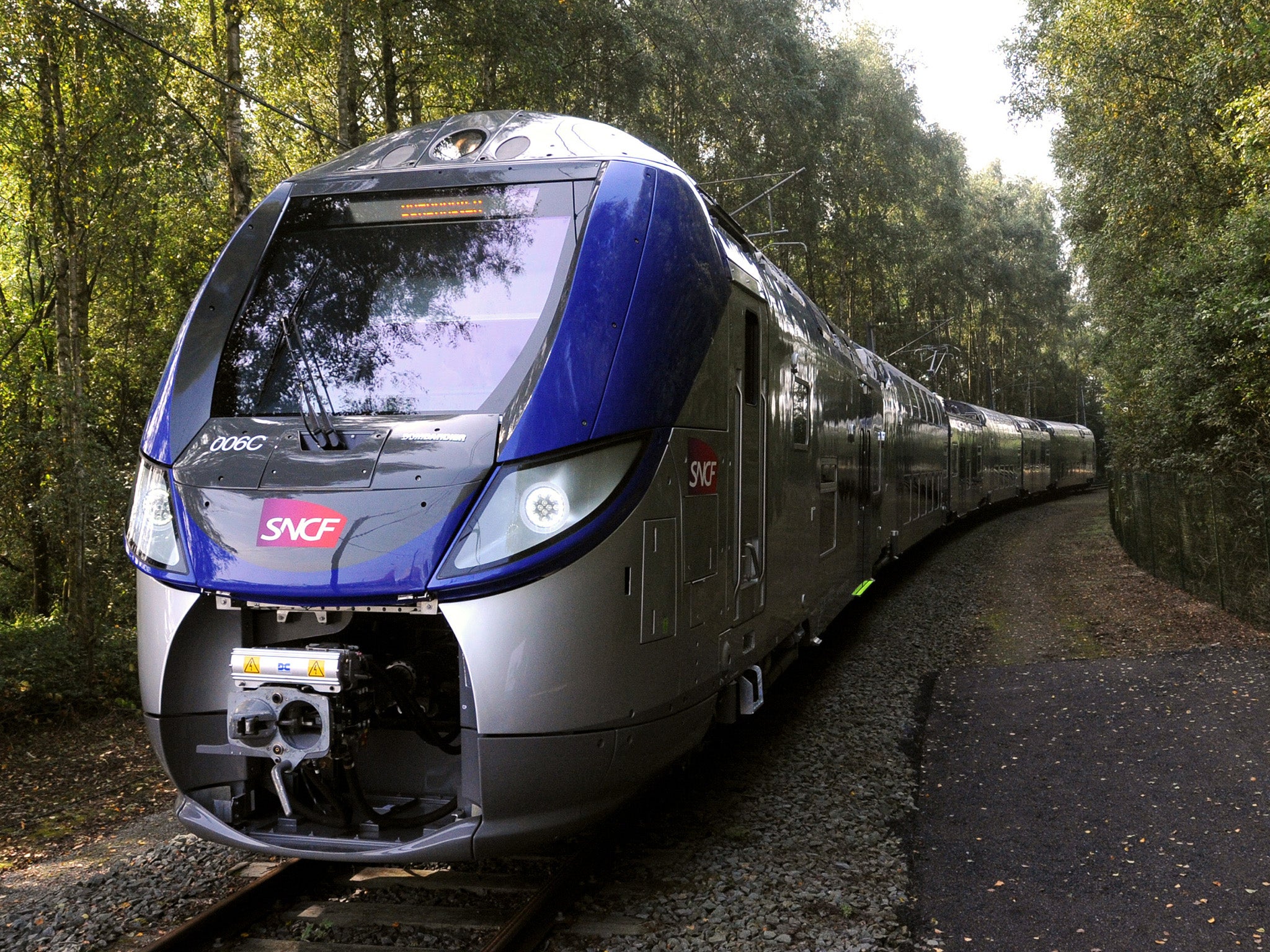How double-decker trains would improve Britain's railways
The man who pays his way

Britain’s trains lie low
Two weeks ago, I had the pleasure of spending the day in Belgium with Sylvia and William Brough. They are the generous Cheshire couple who offered the winning bid for The Independent’s Christmas Auction. You may recall that the prize was to attend the press preview for the marvellous new Mons Memorial Museum and to spend the day with me (yes, second prize was two days …).
We talked of many things: the soul of Vincent van Gogh (Mons is currently hosting an exhibition about how the tortured figure became an artist), the state of the NHS (Sylvia is a retired GP, William a former director of surgery), and how they plan trips (Sylvia organises everything, William just turns up and is pleasantly surprised).
We also discussed how Britain’s railways compare with those on the Continent. William was impressed by the Belgians’ use of double-deck trains, as also seen elsewhere in Europe. In France, two-tier trains are even used on high-speed lines. A straightforward way to increase capacity on the railways. So why not use them on the busiest commuter lines in Britain? I promised to find out.
The answer shines a light on how we differently we do things here. The UK rail industry is well aware of the potential benefits of double-deck trains. But there are big obstacles to introducing the concept here.
Passenger railways were born in Britain, and so our infrastructure is older than anyone else’s. And while George Stephenson’s specification of 1,435mm for the distance between the rails, made in 1826, is standard gauge for the world, Britain is less generous than most with its so-called “loading gauge”. This is the maximum width and, more particularly, height, of carriages.
Because so much of the network was built with an eye for economy, our bridges and tunnels tend to be lower than in the rest of Europe. With sufficient investment (and no little disruption), this problem could be addressed on the most heavily used commuter lines, around Birmingham, Leeds, Manchester and Glasgow, as well as the lines from Brighton and Southampton to London.
But then a second problem arrives: “dwell time” at platforms. Even with a generous provision of doors, it takes longer to load and unload double-deck trains. In Brussels or Paris, the typical “headway” between trains of five or six minutes can tolerate this. But on the busiest lines to and from London, only three minutes is allowed between trains. Extend the dwell time, and capacity on the railways might actually fall.
There is talk of double-deck trains on the commuter link from Southampton to London, but they would have to operate like inter-city services, stopping only at Winchester on the way to and from the capital.
The pretty way
You need not be a rail guru to know that Britain’s trains are tardy by European standards. The 400 miles between Madrid and Barcelona takes 2hrs 45min, while links from London to Edinburgh or Glasgow are 90 minutes slower.
At least when you reach Scotland you discover the most beautiful railways in the world. The West Highland Line from Glasgow to Fort William and onwards to Mallaig is the finest, but there are many others, such as from Ayr to Stranraer and Inverness to Kyle of Lochalsh. Scotland also has the benefit of the world’s greatest railway bridge, across the Firth of Forth, best viewed from the quayside at South Queensferry.
In terms of fares, we have some of the most expensive in the world: the 80-minute, 120-mile trip from Edinburgh to Newcastle costs £48 one-way off-peak. But we also have some of the cheapest. Book ahead on Megatrain, be flexible about when you leave, and you can travel over 200 miles from the Scottish capital to Preston for £7 – the same as the one-way fare from Mons to Brussels, a distance of just 40 miles.
From the Belgian capital, I took the last train to Britain. It was a single-decker Eurostar and the almost-all-stations to St Pancras, calling at Lille, Calais, and Ebbsfleet. I half expected to stop at Littlehaven Halt, in Sussex, five stops from Gatwick. There could have been more passengers on the platform there than in Calais – where the stop consumed a small fortune in power and added about seven minutes to the journey, for the benefit of only six joining passengers. No second storey needed here.
Gravesend flyer
Mark Smith, a long-time friend of this column, and founder of the SeatSixty-One website, says the idea is not new.
“In the 1950s there were prototype double-deck trains on the Kent suburban network. My mum, as a schoolgirl, used to slide down the stairs on the cushions en route to Gravesend.
“Dwell times were definitely an issue back then. But that was due to the door and passageway arrangement. It’s probably less of an issue with modern double-decker trains with extra-wide dual-leaf doors and broad gangways.”
But Mark identifies an extra problem: the way that the rail industry works, with rolling stock owned by leasing companies: “In today’s leasing market you wouldn’t necessarily want double-decker trains that are ‘captive’ to one route.”
The traditional model is to “cascade” trains as new carriages arrive. When the prime routes in and out of London get fresh stock, the cast-offs appear elsewhere in Britain. The usual destinations are Wales, East Anglia and Scotland, giving rise the old joke: “Cut off on three sides by the sea, and on the fourth by British Rail”.
Join our commenting forum
Join thought-provoking conversations, follow other Independent readers and see their replies
Comments
Bookmark popover
Removed from bookmarks